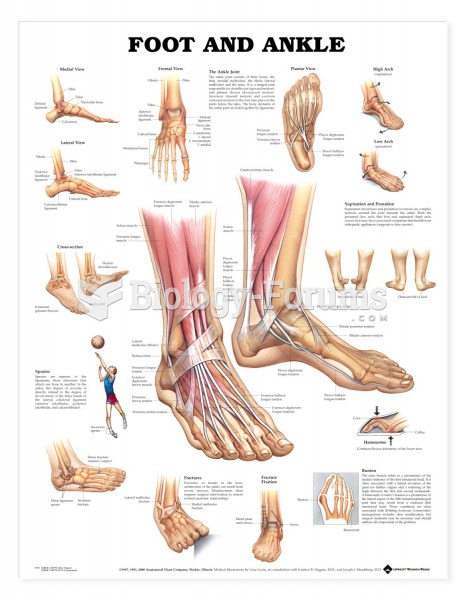|
|
|
Everyone has one nostril that is larger than the other.
A seasonal flu vaccine is the best way to reduce the chances you will get seasonal influenza and spread it to others.
It is difficult to obtain enough calcium without consuming milk or other dairy foods.
A cataract is a clouding of the eyes' natural lens. As we age, some clouding of the lens may occur. The first sign of a cataract is usually blurry vision. Although glasses and other visual aids may at first help a person with cataracts, surgery may become inevitable. Cataract surgery is very successful in restoring vision, and it is the most frequently performed surgery in the United States.
Cancer has been around as long as humankind, but only in the second half of the twentieth century did the number of cancer cases explode.







